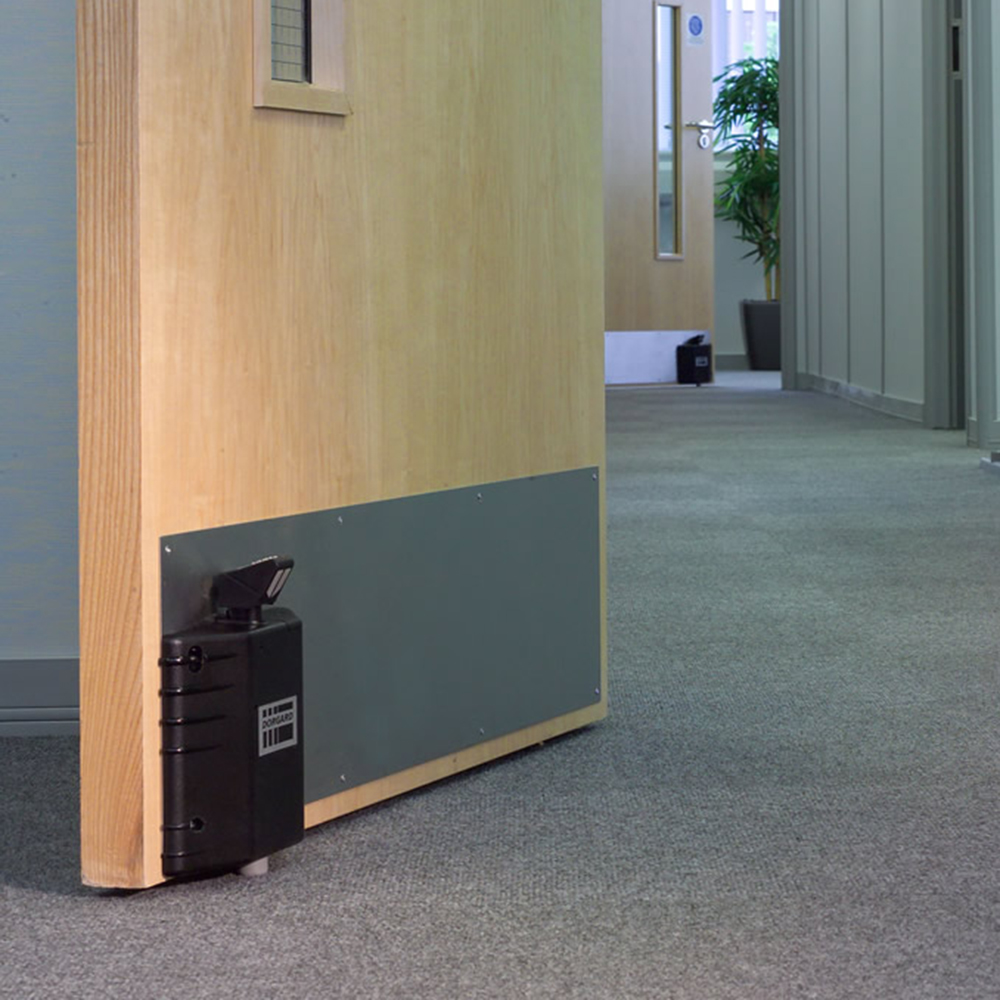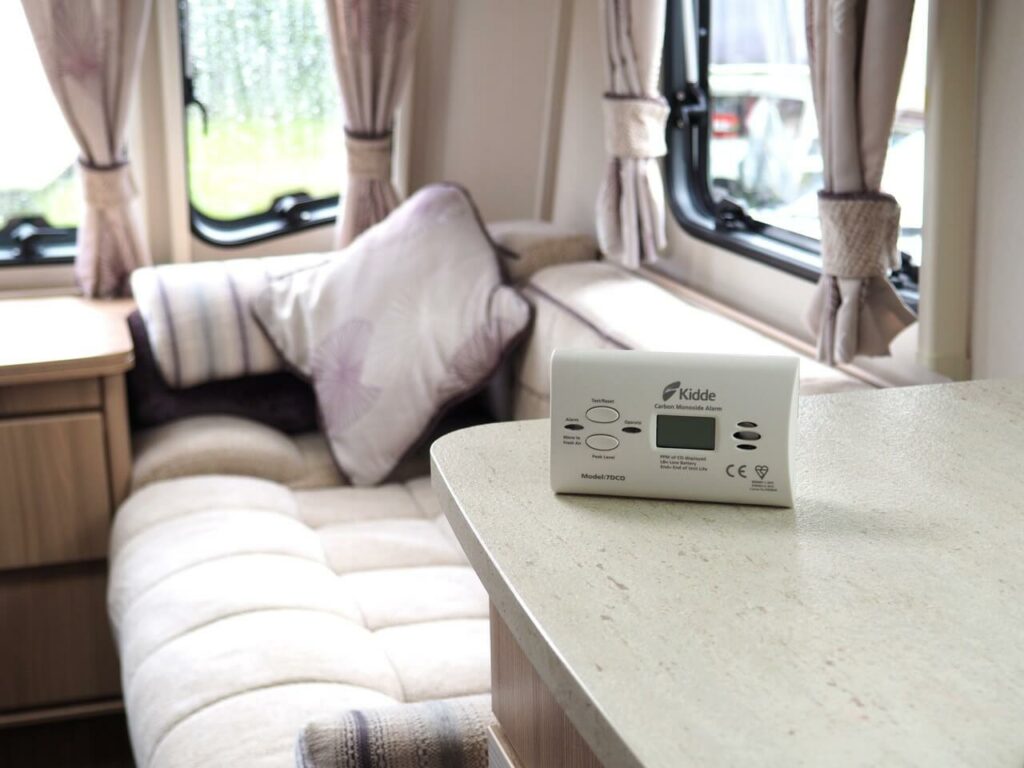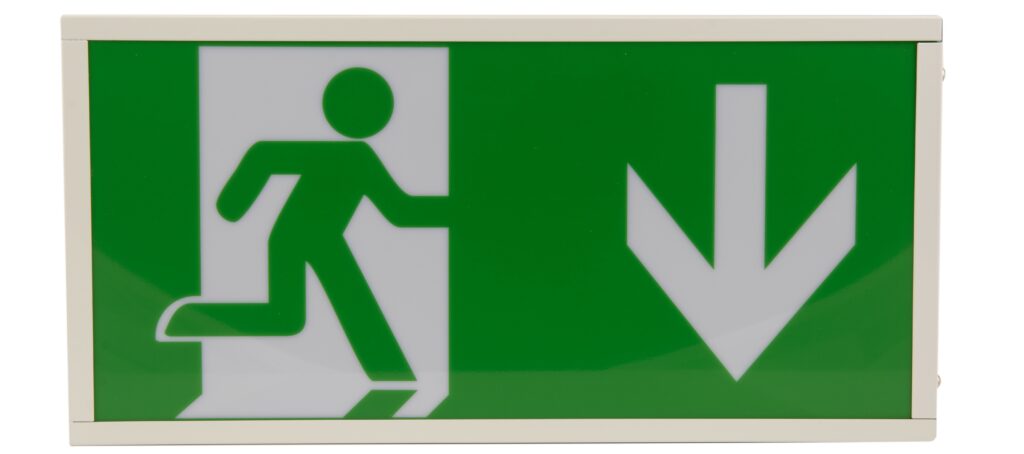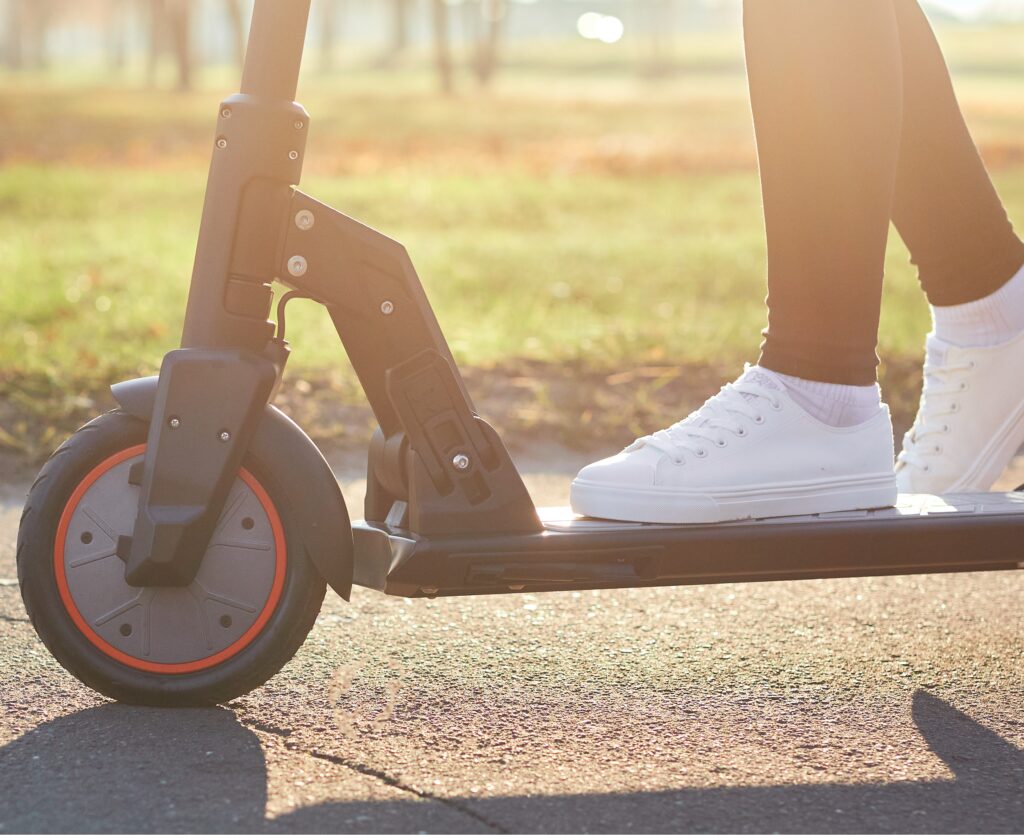Tuesday 30th April 2024

Anyone who has pushed through an internal fire door knows the struggle: these doors require significant effort to open, often leaving people wondering why they need to be so heavy. For elderly residents, wheelchair users, parents with pushchairs or anyone with mobility challenges, heavy fire doors can transform a simple journey through a building into an exhausting ordeal. Understanding why internal fire doors are constructed this way, and more importantly, learning about solutions like fire door closers and fire door retainers, can help building managers create safer, more accessible environments for everyone.
The Science Behind Fire Door Weight
The substantial weight of an internal fire door isn’t a design flaw: it’s a critical safety feature. While standard internal doors typically weigh between 20kg and 50kg, fire-rated doors are significantly heavier. An average FD30 (30-minute) fire door weighs approximately 45kg, while FD60 (60-minute) doors can exceed 75kg. This dramatic difference stems from their specialised construction designed to withstand extreme heat and prevent fire spread.
The core of an internal fire door contains dense, fire-resistant materials that give these doors their life-saving properties. Unlike hollow-core residential doors, fire doors feature solid cores made from materials such as flaxboard, chipboard or specialised timber composites. These materials are engineered to maintain structural integrity when exposed to temperatures exceeding 800°C, creating an effective barrier against flames and smoke.
The thickness also contributes to the weight: FD30 doors are typically 44mm thick, while FD60 doors measure 54mm. This additional thickness isn’t just about the door leaf itself; it accommodates essential components like intumescent strips that expand when heated, sealing gaps to prevent fire and smoke passage. Every element adds weight, but each serves a crucial purpose in protecting lives and property.
Why Fire Door Closers Add to the Challenge
Beyond the door’s inherent weight, the fire door closer creates additional resistance that many people find difficult to overcome. These devices are mandatory on most fire doors, ensuring doors return to their closed position after use: a critical requirement for maintaining fire compartmentation. However, the spring mechanism that enables automatic closing also creates the force users must work against when opening the door.
The strength of a fire door closer is measured in EN power sizes, with EN3 being the minimum for fire doors. Heavier doors require stronger closers, sometimes EN4, EN5 or even EN6, to ensure reliable closure. Unfortunately, this means users face even greater resistance when opening these doors. For someone using a wheelchair, carrying items or experiencing reduced strength due to age or disability, this combination of door weight and closer resistance can create an almost insurmountable barrier.
The legal requirement for fire door closers stems from their vital safety function. Without proper closing mechanisms, fire doors left open become useless in an emergency, allowing smoke and flames to spread rapidly through buildings. Yet this essential safety feature inadvertently creates accessibility challenges that affect thousands of building users daily.

The Accessibility Dilemma
The weight of internal fire doors presents a significant accessibility challenge that goes beyond mere inconvenience. Under the Equality Act 2010, building operators must make reasonable adjustments to ensure disabled people can access services and facilities. Heavy fire doors can effectively exclude people with disabilities from parts of buildings, creating both legal and ethical concerns for property managers.
For elderly residents in care homes or sheltered housing, the effort required to open fire doors can limit independence and dignity. Parents with young children struggle to manage heavy doors while pushing prams or holding toddlers’ hands. Office workers carrying laptops, files or hot drinks face daily battles with doors that seem determined to close before they can pass through. These challenges often lead to dangerous practices like propping doors open with wedges or disabling closers: actions that compromise everyone’s safety and can result in prosecution.
The temptation to circumvent fire door safety measures is understandable but potentially catastrophic. Fire doors propped open cannot perform their critical function of containing fire and smoke, putting lives at risk. Building managers face the challenging task of maintaining fire safety compliance and ensuring their buildings remain accessible to all users.
Modern Solutions: Fire Door Retainers
Fortunately, technology offers elegant solutions to the heavy door dilemma through fire door retainers. These devices legally hold fire doors open during normal use, eliminating the daily struggle and maintaining full fire safety compliance. When a fire alarm sounds, the fire door retainer automatically releases, allowing the door closer to shut the door and restore fire compartmentation.
Different types of retainers suit various building needs and budgets. Acoustic retainers like the Dorgard system work independently, listening for fire alarm sounds and releasing when triggered. These battery-powered units require no complex wiring, making them ideal for retrofitting existing doors. The device’s plunger holds the door at any angle, and users can release it manually with a gentle kick.
Electromagnetic retainers offer another approach, connecting directly to the fire alarm system. These fail-safe devices release the door when power fails; however, the fire alarm panel stops the power supply when the alarm sounds, so they close in a fire. Networked systems can control multiple doors simultaneously, particularly valuable in large residential complexes or care facilities where coordinated door closure is essential during emergencies.
Free-Swing Door Closers: Removing Resistance
For situations where doors need to move freely throughout the day, free swing door closers provide an innovative solution. These devices replace traditional closers, allowing internal fire doors to swing freely like standard doors during normal use. Users experience no resistance when opening or closing the door, dramatically improving accessibility for everyone.
When the fire alarm activates, free-swing closers automatically engage, transforming into traditional closers that pull the door shut. This dual-mode operation means buildings can maintain full fire safety compliance while eliminating the daily burden of heavy doors. Free-swing closers are particularly beneficial in care homes, schools and healthcare facilities where users may lack the strength to operate traditional fire doors.
Some free-swing systems operate wirelessly, detecting alarm sounds acoustically similar to standalone retainers. Others integrate with fire alarm panels for coordinated response across multiple doors. The choice depends on building infrastructure, budget, and specific accessibility needs.
Installation and Compliance Considerations
When implementing solutions for heavy fire doors, proper installation by competent professionals is essential. Fire door retainers and specialised closers must be fitted according to manufacturer specifications to maintain the door’s fire rating. Any modification to fire doors or their components requires careful consideration of certification requirements and building regulations.
For communal areas in residential buildings, hold-open devices must conform to BS 7273-4:2015 Critical (Category A) standards. This ensures devices will reliably release doors during emergencies, maintaining the integrity of escape routes. Building managers should consult their fire risk assessments to determine which doors can be held open and what type of devices are most appropriate.
Regular maintenance of both fire door closers and retainers ensures continued reliability. Battery-powered devices need periodic battery replacement. Any type of fire door retainer should be tested as part of the normal fire door test, at least monthly. Creating a comprehensive maintenance schedule helps ensure all devices function correctly when needed most.

Cost-Benefit Analysis
While installing fire door retainers or free-swing closers represents an initial investment, the benefits often outweigh the costs. Improved accessibility can reduce injury risks from people struggling with heavy doors, potentially lowering insurance claims and liability exposure. Enhanced building usability may increase property values and rental appeal, particularly for buildings marketed to older residents or families.
Perhaps most importantly, these solutions eliminate the temptation to prop doors open, which could result in fines or prosecution for the Responsible Person if fire broke out. The cost of prosecution for fire safety violations, not to mention the devastating consequences of fire spreading through propped-open doors, far exceeds the investment in proper hold-open devices. Many building managers find that retrofitting existing doors with retainers costs significantly less than defending legal action or managing the aftermath of a fire incident.
Government grants and funding may be available for accessibility improvements, particularly in social housing or care facilities. The Access to Work scheme can support workplace modifications, while Disabled Facilities Grants may cover residential adaptations. Building managers should explore all funding options when planning accessibility upgrades.
Choosing the Right Solution
Selecting appropriate solutions for heavy internal fire doors requires careful assessment of building use, user needs, and fire safety requirements. High-traffic areas might benefit most from free-swing closers that eliminate resistance entirely. Quieter zones might suit simple acoustic retainers that hold doors open when needed but allow normal closure at other times.
Consider user demographics when making decisions. Buildings with many elderly or disabled users may require comprehensive solutions across all fire doors. Mixed-use buildings might need different approaches for different areas: free-swing closers in communal areas but standard closers with occasional retainer use in less frequented zones.
Environmental factors also influence choice. Noisy environments might not suit acoustic retainers that could struggle to distinguish fire alarms from background noise. Buildings with sophisticated fire alarm systems might benefit more from integrated electromagnetic solutions that guarantee coordinated door closure during emergencies.
Future Developments
The fire door industry continues innovating to address accessibility challenges while maintaining safety standards. Newer materials promise lighter doors without compromising fire resistance, though these remain in development. Smart building technologies may soon enable fire doors that adjust closing force based on user needs, recognising when someone with mobility challenges approaches.
Research into alternative fire protection methods could eventually reduce reliance on heavy doors altogether. Active fire suppression systems, improved compartmentation designs, and advanced materials might create buildings where fire safety doesn’t conflict with accessibility. Until then, fire door closers and retainers remain our best tools for balancing these competing needs.
Building regulations continue evolving to recognise accessibility importance alongside fire safety. Future standards may mandate accessibility solutions as part of fire door installations, making buildings more inclusive by design rather than retrofit.
Practical Implementation Tips
When upgrading fire doors for better accessibility, start with a thorough audit of current provisions. Identify doors causing the most difficulty: often those on main circulation routes or leading to essential facilities. Survey building users to understand their specific challenges and preferences for solutions.
Engage with fire safety consultants and accessibility experts to ensure proposed solutions meet all regulatory requirements while genuinely improving usability. Professional fire door inspections can identify doors where existing closers might be incorrectly adjusted, potentially providing quick wins through simple adjustments rather than equipment replacement.
Implement changes gradually if budget constraints exist, prioritising high-impact areas first. Monitor the effectiveness of solutions through user feedback and adjust approaches as needed. Remember that what works in one building might not suit another: flexibility and responsiveness to user needs are key.
The weight of internal fire doors reflects their critical role in protecting lives and property from fire. While this weight creates genuine accessibility challenges, modern solutions like fire door closers and fire door retainers offer effective ways to maintain safety while improving usability for everyone. Building managers no longer need to choose between compliance and accessibility: with the right equipment and approach, buildings can be both safe and welcoming to all users.
Understanding why fire doors are heavy helps us appreciate their importance while recognising the need for thoughtful solutions to accessibility challenges. By investing in appropriate fire door retainers and specialised closers, we create environments where safety and accessibility work in harmony, ensuring no one is excluded from full participation in community life while maintaining the highest standards of fire protection.






